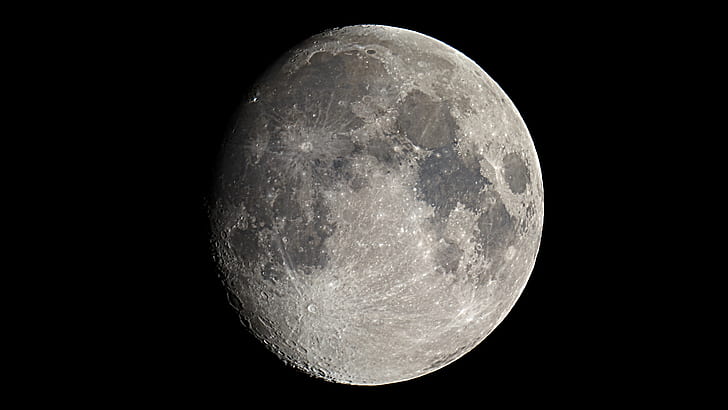Exploring the Travels of Earth’s Celestial Companion
Have you ever wondered about the incredible journey of our moon? Delve into the captivating story of the moon’s travels, from its formation to its enduring presence in our night sky. As the glowing orb that graces our night sky, the moon has captivated and inspired humanity for millennia. But have you ever stopped to ponder the incredible journey of our celestial companion? From its formation to its current position, the moon’s travels are a testament to the dynamic nature of our universe. Let’s embark on an exploration of the moon’s fascinating journey and uncover the secrets it holds.
Formation of the Moon: A Celestial Collision
The moon’s story begins with a dramatic event that occurred approximately 4.5 billion years ago. A massive object, possibly the size of Mars, collided with a young Earth in a cataclysmic collision. This collision ejected debris into space, which eventually coalesced to form our moon. The moon’s birth was the result of a violent cosmic event, setting the stage for its incredible journey through the ages.
Orbiting Earth: The Moon’s Steady Companion
Once formed, the moon settled into an orbit around Earth. Its gravitational interaction with our planet keeps it locked in a synchronous rotation, meaning the same side of the moon always faces Earth. This orbit has remained remarkably stable over billions of years, allowing us to observe the moon’s various phases and appreciate its ever-changing appearance in the night sky.
The Moon’s Orbit and Phases
The moon’s orbit around Earth is elliptical, resulting in variations in its distance from us. This phenomenon leads to changes in the moon’s apparent size, known as the lunar phases. As the moon travels around Earth, it passes through its eight primary phases: new moon, waxing crescent, first quarter, waxing gibbous, full moon, waning gibbous, third quarter, and waning crescent. Each phase offers a unique spectacle and contributes to the moon’s enduring allure.
Lunar Exploration: Humanity’s Journey to Our Celestial Neighbor
While the moon has been a constant presence in our night sky, humans have long harbored a desire to explore its surface. In 1969, NASA’s Apollo 11 mission achieved the historic feat of landing the first humans on the moon. Since then, a total of six Apollo missions successfully reached the lunar surface, providing invaluable scientific data and inspiring generations with their extraordinary achievements.
Discoveries on the Lunar Surface
During their brief visits to the moon, astronauts conducted experiments, collected samples, and captured breathtaking photographs. These endeavors revealed vital information about the moon’s geology, its formation, and its historical connection to Earth. The moon’s desolate landscapes, ancient impact craters, and volcanic features offered a glimpse into the moon’s tumultuous past and provided clues about the early history of our solar system.
The Moon’s Future: Challenges and Possibilities
As we continue to explore the moon, it has become a focal point for future space missions and scientific endeavors. The moon’s surface has the potential to serve as a stepping stone for human missions to more distant destinations, such as Mars. Additionally, the moon’s resources, such as water ice in permanently shadowed craters, could support future lunar bases and serve as a vital resource for deep space exploration.
Conclusion
The moon’s journey is a testament to the wonders of our universe and our innate curiosity as human beings. From its formation in a violent collision to its enduring presence as Earth’s celestial companion, the moon’s travels have shaped our understanding of the cosmos and continue to inspire exploration and discovery.
As we gaze up at the moon, let us appreciate its remarkable journey and the mysteries it holds. The moon’s past, present, and future are intertwined with our own, serving as a reminder of our connection to the vastness of space.
FAQs:
Exploring the Travels of Earth’s Celestial Companion
1Q: How far is the moon from Earth?
A: On average, the moon is about 238,900 miles (384,400 kilometers) away from Earth
2Q: How long does it take for light from the moon to reach Earth?
A: Light from the moon takes approximately 1.3 seconds to reach Earth.
3Q: Can you see the moon during the daytime?
A: Yes, the moon is often visible during the daytime, depending on its phase and position in the sky.
4Q: Is the moon moving away from Earth?
A: Yes, the moon is gradually moving away from Earth at a rate of about 1.5 inches (3.8 centimeters) per year.
5Q: Can humans live on the moon?
A: While living on the moon poses numerous challenges, future advancements in technology may make long-term lunar habitation a possibility.
6Q: Are there plans for future moon missions?
A: Yes, several space agencies and private companies have plans for future moon missions, including crewed missions and robotic exploration.



